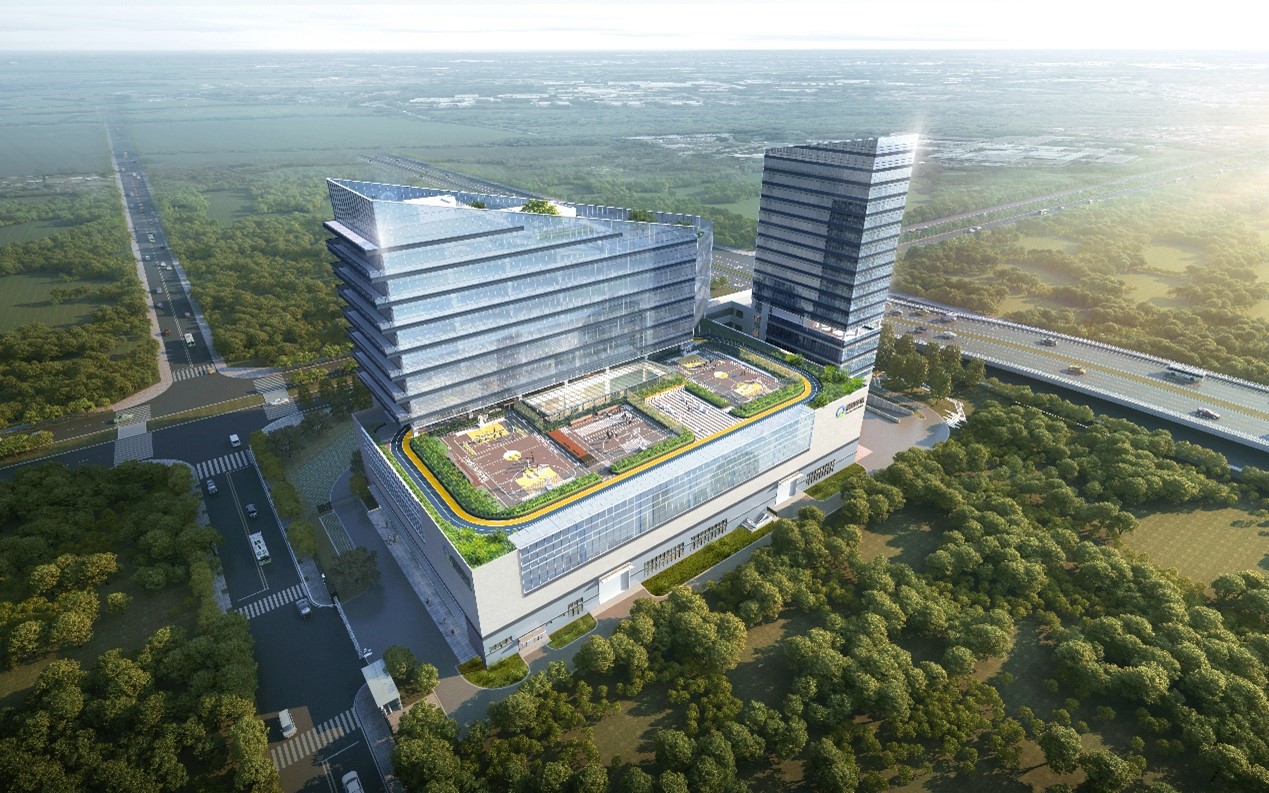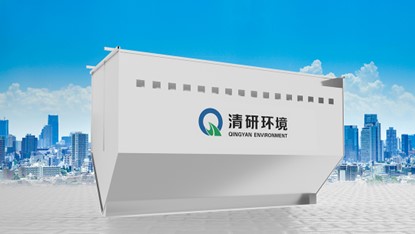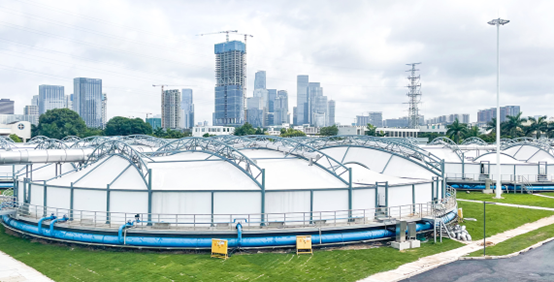The Application of the World-leading RPIR Rapid Biochemical Technology With less land use and low investment in the sedimentation tank renovation of Nanshan Wastewater Treatment Plant
Tsinghua Research Institute of Shenzhen Tsinghua University, incubated by Tsinghua Research Institute, has become a national high-tech enterprise and a national-level specialized little giant enterprise. Tsinghua Research Institute has inherited the innovative gene of Tsinghua University. The two main founders and the founding team of the company are from Tsinghua Research Institute of Shenzhen Tsinghua University. As early as around twenty fourteen, the leaders of Tsinghua Research Institute of Shenzhen Tsinghua University proposed to deepen the reform of the mechanism, use the market to judge the advancement of technology, and began to explore the industrialization of innovative technologies and products by industrialization companies controlled by the inventor team. Therefore, Tsinghua Research Institute became the first work to be tried.
In July twenty fourteen, Tsinghua Environment was established based on the Tsinghua University Research Institute in Shenzhen. In twenty fifteen, the company built the first batch of industrial wastewater treatment demonstration projects, and the RPIR rapid biochemical sewage treatment technology won the first prize of Shenzhen Technology Invention. In twenty sixteen, it entered the market of improving the quality and efficiency of municipal sewage treatment plants and established the first ten-thousand-ton project. In twenty seventeen, it established a bypass high-standard biochemical treatment basin management model, breaking the black and odorous river source control and pollution interception emergency market.
In twenty eighteen, it established a landmark case with a scale of more than two hundred thousand tons and created a standard-compliant section of the Guanlan River Basin. In twenty nineteen, emergency and municipal sewage plant businesses went hand in hand and a new vertical flow A/RPIR denitrification and phosphorus removal technology demonstration case was established. In twenty twenty, investors were introduced and an IPO, or Initial Public Offering, was launched. During this period, it won the first prize of Guangdong Provincial Environmental Protection Technology. In twenty twenty-one, a subsidiary in Shanghai and a branch in Wuhan were established and the national promotion plan was fully launched. A number of technical derivative solutions began to be promoted.
In the same year, it was recognized as a national specialized and new little giant enterprise; in April twenty twenty-two, Qingyan Environment was listed on the Shenzhen Stock Exchange's Growth Enterprise Market. In the same year, Qingyan Environment's self-developed T-Bic rapid biochemical technology began to be promoted in the market; in twenty twenty-three, the self-developed oxygen-limited RPIR technology was put into market application. At present, Qingyan Environment is further enriching and industrializing innovative products through existing technologies, independent research and development of new categories, investment and mergers and acquisitions, and other means to create a specialized, specialized and new cluster of innovative technology productization. RPIR rapid biochemical sewage treatment technology.

The Rapid Purification of sewage using sedimentation Integrated rectangular airlift loop Reactor, or RPIR, is an internationally leading rapid biochemical sewage treatment technology independently developed by Qingyan Environment. The RPIR rapid biochemical sewage treatment process organically couples the four functions of aeration oxygen supply, airlift circulation, biochemical reaction, and sedimentation separation to form an intensive and efficient biological sewage treatment reactor. There is no need to build a sedimentation tank, shortening the process flow of sewage treatment. The core equipment of the technology is the RPIR standard module, which has a unique structural form. It can be an assembled combined equipment or a skid-mounted sewage treatment integrated machine. One, reaction and sedimentation in one, no secondary sedimentation tank; Two, relatively high sludge low concentration, full sludge mixing, large water quality change resistance; Three, core components, no wearing parts, life of thirty years; Four, the tank body is diverse and can be configured according to the terrain; Five, the operating cost is slightly lower or the same as the traditional activated sludge method, the sludge treatment fee is slightly lower, and the effluent quality is stable.

The S-RPIR process is composed of a pure RPIR tank and only one treatment unit can complete the whole process from raw water entry to standard water discharge achieving the goal of removing pollutants such as Chemical Oxygen Demand ammonia nitrogen total phosphorus and Suspended Solids. This process package is suitable for occasions with no total nitrogen requirements and tight land use.The A/RPIR process builds on the S-RPIR process package by adding an anoxic unit. The denitrification process is completed by reflux of nitrification liquid to the anoxic unit, which can achieve the goal of removing pollutants such as Chemical Oxygen Demand, ammonia nitrogen, total nitrogen, total phosphorus, and Suspended Solids. This process package is suitable for occasions with total nitrogen requirements and tight land use. The A²/RPIR process adds an anaerobic unit to the A/RPIR process package. This addition allows for the release of phosphorus from the sludge in the anaerobic unit, thereby improving the effect of aerobic phosphorus absorption. This process package is one of the most complete process packages in the field of biochemical sewage treatment. It can achieve deep nitrogen and phosphorus removal from sewage. It is particularly suitable for upgrading and expanding municipal sewage treatment plants and building new ones. It can also effectively solve the problem of land shortage in projects.

The Shenzhen Nanshan Water Purification Plant System Upgrading and Reconstruction Project has a processing scale of one hundred seventy-six thousand cubic meters per day. The effluent standard is Class A. The peak water volume of Shenzhen Nanshan Water Purification Plant in the rainy season has exceeded the original plant load, and it is urgent to expand the treatment scale. This project will transform six idle radial flow primary sedimentation tanks with a diameter of forty-five meters into RPIR tanks, upgrading them to treatment facilities with biochemical treatment functions. After expansion, the treatment scale reaches one hundred seventy-six thousand cubic meters per day, and the effluent water quality complies with the Class A standard of the Pollutant Discharge Standard for Urban Sewage Treatment Plants, GB18918-2002. The project highlights include the full utilization of existing sedimentation tanks to meet the expansion needs without adding new land, and the upgrade of primary physical and chemical treatment functions to secondary biochemical treatment functions in situ, with stable treatment effect. The main indicators of effluent are better than the Class A standard.
 LOADING...
LOADING...
 DATE:2024年08月30日
DATE:2024年08月30日


